Ireland, a land steeped in history and rich with mystical charm, has long been associated with its captivating Celtic symbols. These ancient emblems, deeply rooted in the spiritual and cultural heritage of the Celts, continue to enchant and inspire to this day. From intricate knots to powerful symbols of nature, the world of Celtic artistry holds a treasure trove of stories and meanings waiting to be unraveled. Join us as we embark on a journey through the enigmatic realm of Celtic symbols, unearthing their ancient meanings and significance in modern times.
Key Takeaways
Explore the ancient meanings and significance of Celtic symbols, such as interlaced knots, the Trinity Knot, Dara Knots and more.
Discover how these symbols have been adopted into modern art forms like tattoos and jewelry designs.
Understand their influence on popular culture today in movies literature & body art to honor heritage & express beliefs.
The Enigma of Celtic Knots
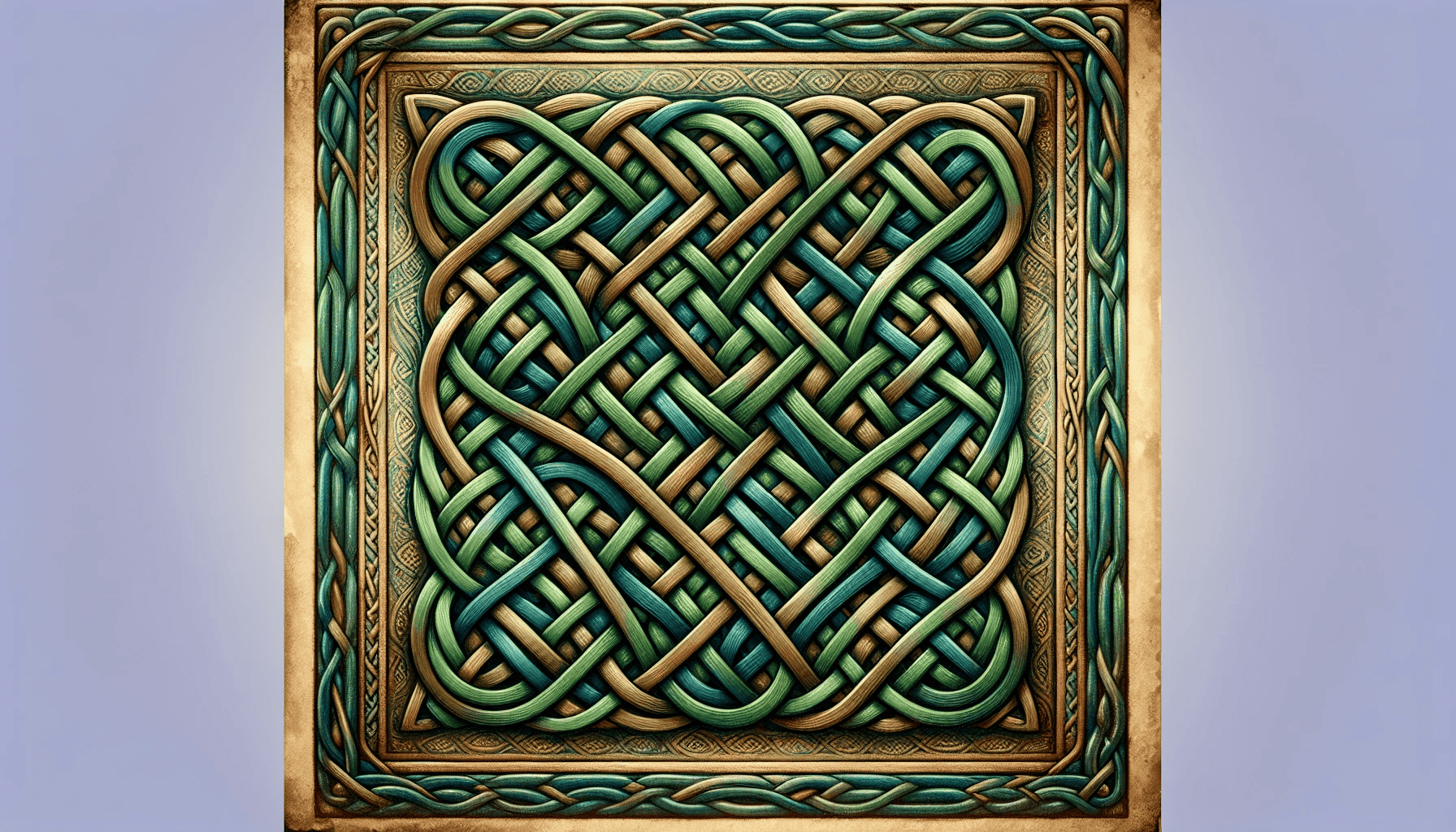
Celtic knots, recognized by their captivating interwoven patterns, are a distinctive feature of Celtic culture. Originating from the ancient Celts of Northern Europe around 500 BC, these symbols have permeated various forms of art, including:
the Irish harp
traditional Irish rings
Celtic tattoos
Celtic jewelry
Celtic artwork
The intricate designs of Celtic knots symbolize:
Endlessness
Cohesion
Eternal spiritual life
Unity
These symbols reflect the eternal spiritual life and unity that the ancient Celts cherished. With no identifiable start or finish, the interlaced loops of these mysterious celtic symbols and meanings persistently engage and pique our interest.
Unraveling the Trinity Knot
The Trinity Knot, a symbol of eternal life and spiritual unity, is a prime example of the complexity and layered meanings found in Celtic knotwork. This ancient symbol, also known as the Triquetra, has been observed on Celtic artifacts dating back to the 7th century.
With its roots in Pagan culture, the Trinity Knot later became associated with the Christian Holy Trinity – the Father, Son, and Holy Spirit – after the arrival of Christianity in Ireland. Presently, the Trinity Knot retains its prominence in Irish culture, frequently appearing on wedding rings and other tokens of love and unity.
The Significance of the Dara Knot
Another captivating Celtic knot is the Dara Knot, symbolizing strength and internal knowledge. The name “Dara” is derived from the Irish word for oak tree, a revered symbol of strength in Celtic culture.
The Dara Knot’s design, which mirrors the oak tree’s roots, acts as a symbol of inner fortitude and resilience. The oak tree has long been held as a powerful symbol in Celtic mythology, and the Dara Knot carries its legacy in the intricate patterns of Celtic art.
The Endless Paths of Interlaced Patterns
Interlaced patterns are a fascinating aspect of Celtic art, encompassing a wide range of designs and symbols. While the meanings of many Celtic symbols have been passed down through the centuries without written documentation, their interpretations are often based on usage, context, and related folklore.
From the impactful Triquetra to the elaborately woven Serch Bythol that symbolizes eternal love, interlaced patterns in Celtic art engage the imagination and conceal secrets ready to be unveiled.
The Mystique of the Celtic Cross
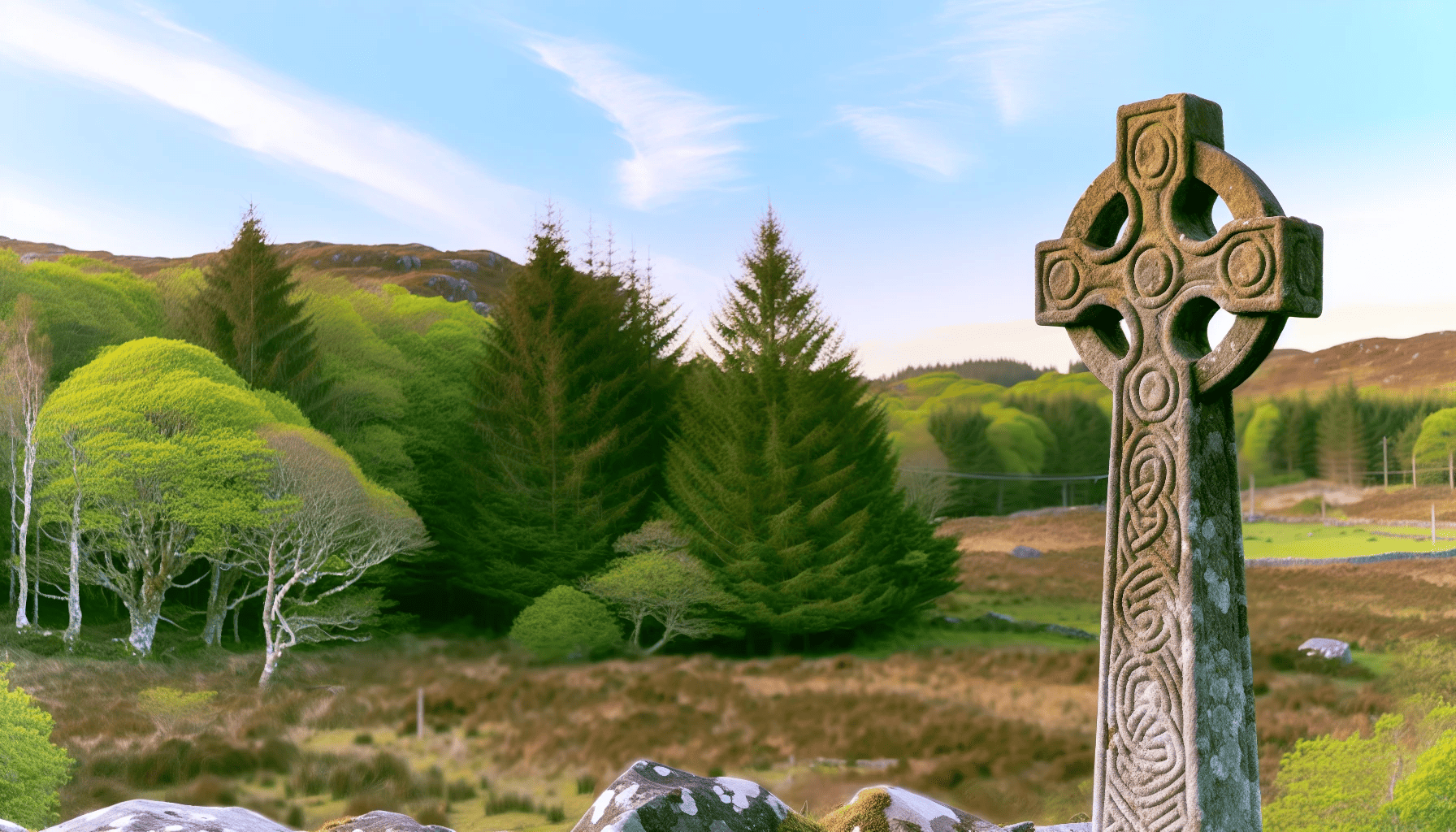
The Celtic Cross, also a renowned symbol, intriguingly combines Christian and pagan beliefs. Revered as a symbol of faith and hope, the Celtic Cross is believed to represent the Holy Trinity, with its central circle symbolizing the eternal love of God and the hope of salvation.
The Celtic Cross:
Originated in the early Middle Ages
Some of its earliest known depictions date back to the 8th or 9th century
Remains a powerful and enduring symbol in Celtic culture
Embodies both spiritual and cultural significance
Variations of the Celtic Cross
The Celtic Cross comes in various forms and designs, each carrying its own unique symbolism and meaning. Some interpretations suggest that the four sections of the cross represent the four cardinal directions, the four elements, the four seasons, or the four stages of the day. Other variations of the Celtic Cross include the Kells High Crosses, the Monasterboice High Crosses, and the Clonmacnoise High Cross, each showcasing their own intricate designs and rich history.
As a powerful symbol in Celtic culture, the cross remains a source of fascination and inspiration for those seeking to connect with their ancient heritage.
The Celtic Cross in Modern Times
The Celtic Cross maintains its allure and continues to inspire in contemporary times. Its classic design has permeated into modern art, jewelry, and tattoos, bringing its ancient symbolism into the current era. The cross has also become a symbol of cultural pride, religious devotion, and spiritual growth, acting as a bridge between the past and the present.
Its enduring popularity is a testament to the power and mystique of this ancient emblem, as it continues to weave its magic into the hearts and minds of those who cherish their Celtic heritage.
The Sacred Trees of Celtic Lore
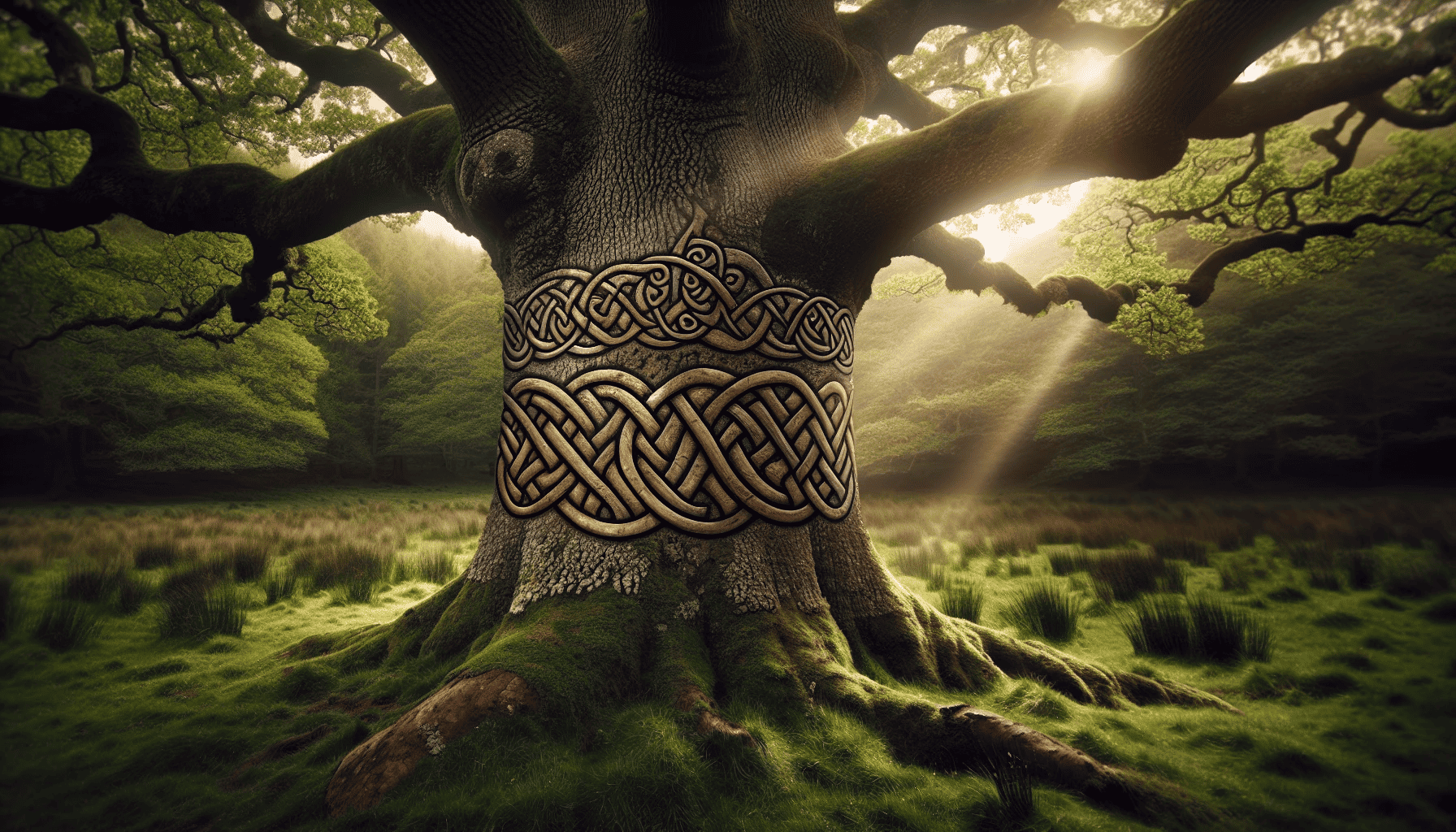
Trees were of special significance in Celtic mythology, having associations with various symbols and beliefs. The sacred oak tree, for instance, was revered as a symbol of strength, wisdom, and endurance. The yew tree, on the other hand, was believed to be a gateway to the Otherworld, representing the link between the mortal realm and the realm of the gods.
The Celtic Tree of Life, a symbol of an intrinsic union with nature and the elements, further highlights the importance of trees in Celtic culture, embodying the interconnectedness of all living things.
The Oak Tree: A Pillar of Strength
The oak tree, symbolizing strength, wisdom, and endurance, had a notable role in Celtic mythology and folklore. Associated with the thunder and storm god Taranis, the oak tree was often regarded as the king of the forest in Celtic culture. Beyond its association with deities, the oak tree’s robust and enduring nature made it a symbol of resilience and protection.
Wands crafted from oak were believed to impart fidelity and longevity, showcasing the oak tree’s importance in various facets of Celtic life.
The Mythical Yew: Gateway to the Otherworld
The yew tree, due to its association with the Otherworld, occupied a special position in Celtic mythology. Known as the Tree of Ross, the yew tree was believed to be sacred, connected to death, rebirth, and the eternal cycle of life. Its ability to regenerate itself and its dioecious nature further reinforced its mythical representation in the Celtic Otherworld.
The yew tree served as a protector and a portal to the Otherworld, symbolizing the profound connection between nature and the divine. This mystical tree continues to inspire and captivate those seeking to uncover the mysteries of Celtic lore.
Spirals in Celtic Artistry
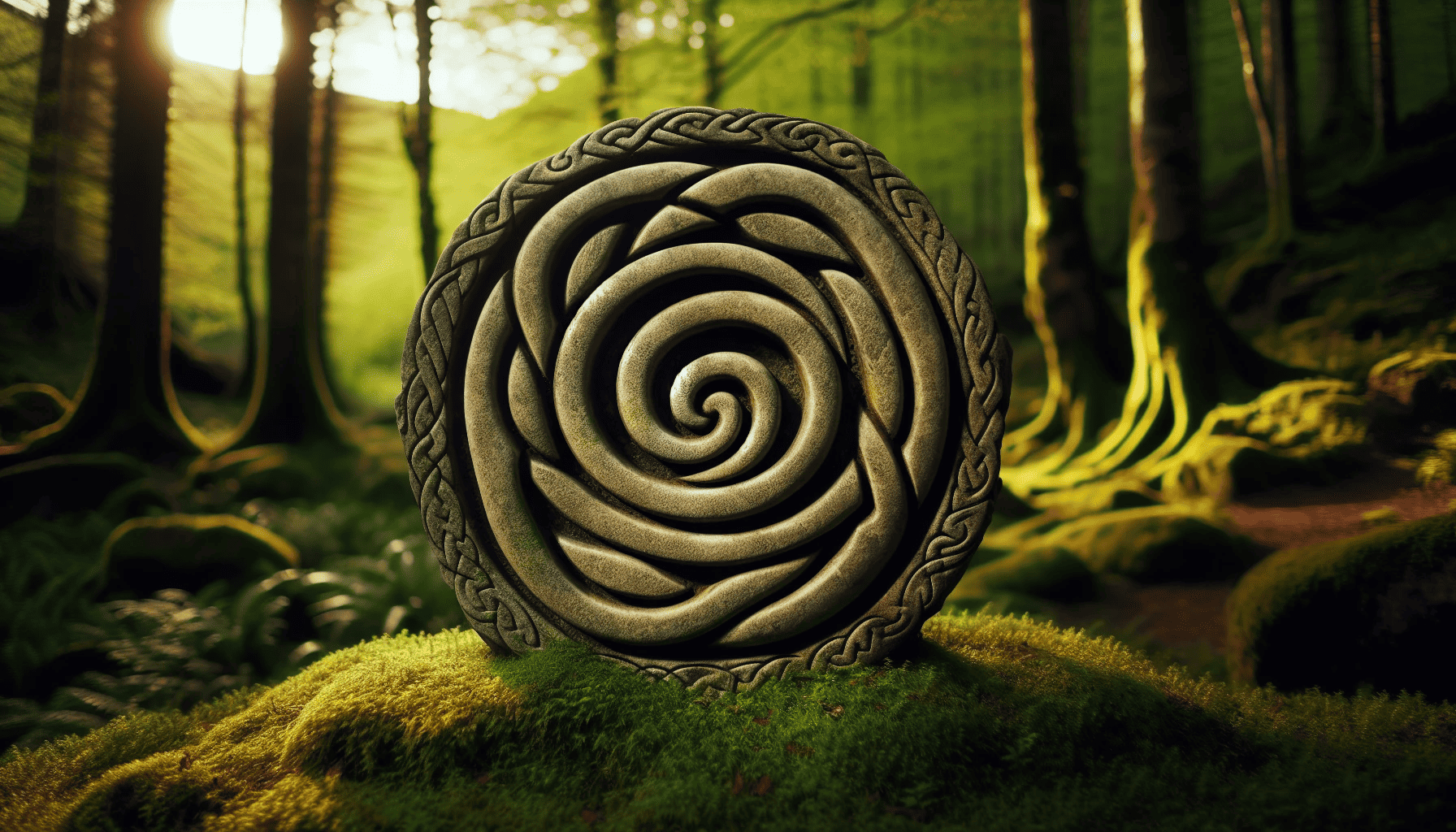
Spirals, another engaging element in Celtic art, represent various meanings and concepts. From the simple single spiral, representing the radiance of cosmic energy and the cyclical nature of life, to the complex Triskelion, embodying the harmony of land, sea, and sky, Celtic spirals have captivated the imagination for centuries.
These ancient Celtic symbols, characterized by their swirling patterns and complex designs, persist in captivating and inspiring those interested in deciphering the mysteries of Celtic artistry, including the celtic ogham alphabet.
The Single Spiral: Journey from Inner to Outer Self
The single spiral is a symbol of personal growth and transformation, representing the journey from the inner self to the outer soul. In Celtic belief, the single spiral is associated with the radiance of cosmic energy, knowledge, and perseverance.
The anti-clockwise spiral, in particular, is said to signify the journey from the inner self to the outer world, symbolizing the balance and harmony between the internal, external, and spiritual aspects of one’s being. The single spiral serves as a reminder of the importance of self-discovery and the pursuit of personal growth.
The Triskelion: Harmony of Land, Sea, and Sky
The Triskelion, a symbol of equilibrium and harmony among the three realms, is made up of three interlinked spirals, each signifying different facets of the divine or natural world. The Triskelion has been associated with concepts such as:
eternity
cycles of life
interconnectedness
the harmony of land, sea, and sky
This ancient symbol, which has been observed in various cultures and epochs, continues to enchant and inspire those who seek to uncover its mysteries and embrace its powerful symbolism.
Emblematic Irish Celtic Symbols
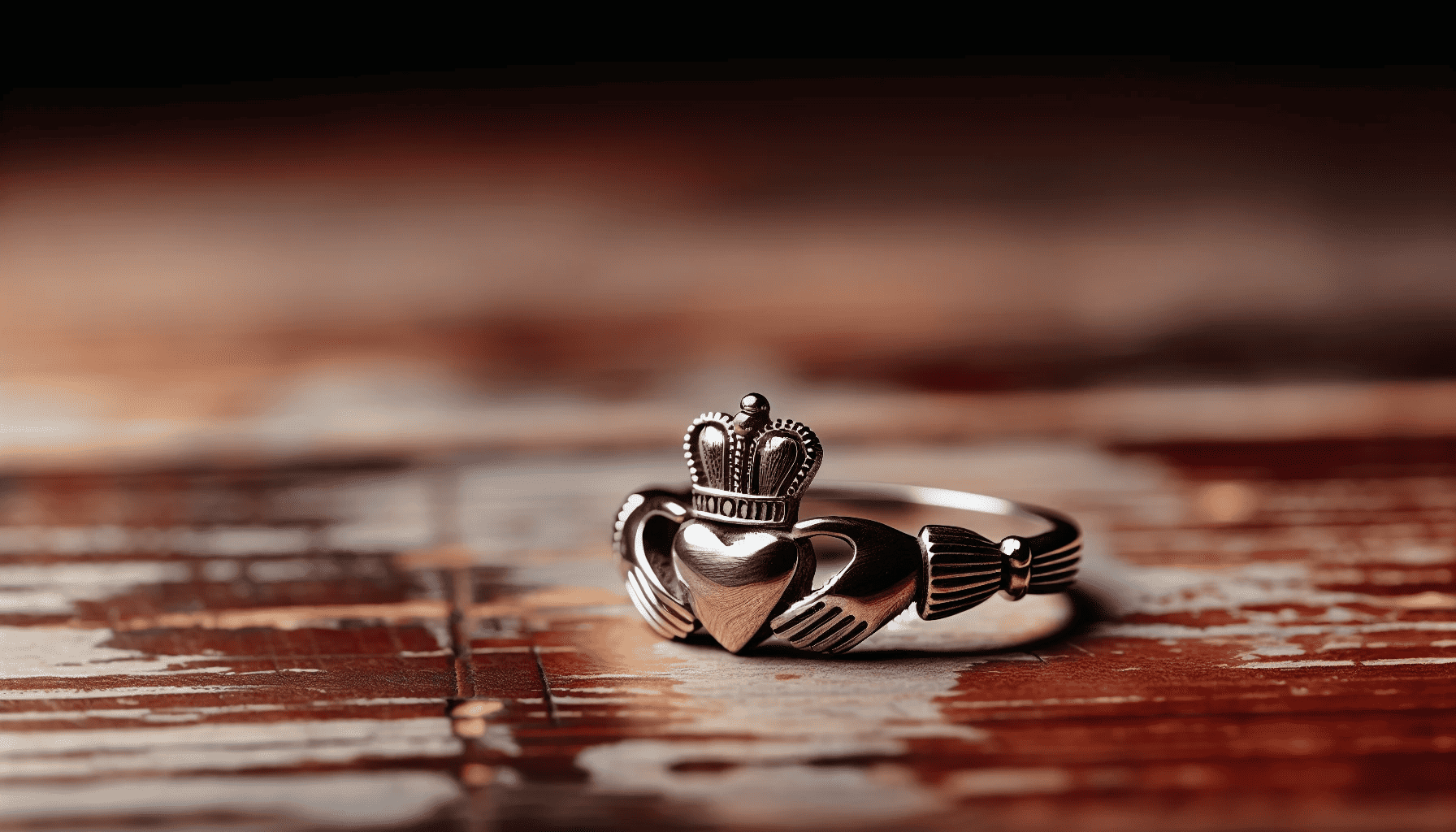
Prominent Irish Celtic symbols, like the Claddagh Ring and the Shamrock, have come to symbolize Ireland, mirroring the nation’s abundant cultural heritage and spiritual beliefs. These symbols, deeply rooted in the history and folklore of the Emerald Isle, continue to captivate and inspire those who cherish their Irish heritage.
From symbols of love, loyalty, and friendship to emblems of faith and the Holy Trinity, these popular Celtic symbols have left an indelible mark on the hearts and minds of generations.
The Claddagh Ring: An Icon of Irish Identity
The Claddagh Ring is a conventional piece of Irish jewelry, symbolizing love, loyalty, and friendship. The heart, hands, and crown in the design symbolize love, friendship, and loyalty, respectively. Originating from the Claddagh, a small fishing village in Galway, the ring has a rich history dating back to the 1700s.
The Claddagh Ring, a traditional Irish ring, is often used as a wedding ring, and according to tradition, it should not be bought for oneself but given as a gift. This iconic symbol of Irish identity continues to enchant and inspire those who wear it, serving as a reminder of the enduring bonds of love and friendship.
The Shamrock: More Than Just a Lucky Charm
The Shamrock, commonly seen as a symbol of fortune and luck, also has strong ties to Saint Patrick and the Christian Holy Trinity. According to legend, Saint Patrick used the Shamrock to illustrate the Holy Trinity during his mission to convert the Irish people to Christianity.
Beyond its religious significance, the Shamrock has also become a national symbol of Ireland, reflecting the nation’s rich history and cultural identity. Today, the Shamrock serves as a reminder of the enduring bonds between faith, heritage, and the luck of the Irish.
Lesser-Known Celtic Emblems
While the Claddagh Ring and the Shamrock are the most recognized Irish Celtic symbols, there exist many other underappreciated emblems with noteworthy meaning and symbolism in Celtic culture. From the Celtic Motherhood Knot, a symbol of the unbreakable bond between mother and child, to the Ailm, a symbol of foresight and spiritual journey, these lesser-known Celtic symbols offer a glimpse into the rich tapestry of Celtic artistry and belief.
The Celtic Motherhood Knot: A Bond Eternal
The Celtic Motherhood Knot, inspired by authentic Celtic knots, represents the perpetual bond between a mother and her child. This stylized design, consisting of two overlapping hearts, each with an elliptical loop down its center, serves as a poignant reminder of the unbreakable bond and everlasting love that exists between a mother and her child.
A testament to the power of maternal love, the Celtic Motherhood Knot is a beautiful emblem of the deep connections that tie us to our roots and our families.
The Ailm: Insight and Enlightenment
The Ailm, a less recognized Celtic symbol, signifies strength, endurance, and resilience. In ancient Celtic tree lore, fir trees were especially significant. They represented the healing of the inner soul. The Ailm reminds us of the sacred connection between nature and divinity. It serves as a passage to our inner guidance and spiritual knowledge..
With its powerful symbolism and connection to the natural world, the Ailm offers insight and enlightenment for those seeking to uncover the mysteries of Celtic lore.
The Influence of Ancient Celts on Modern Symbolism
The persistent charm of Celtic symbols is apparent in their continuing influence on contemporary art, tattoos, and popular culture. From intricate Celtic knotwork tattoos and contemporary jewelry designs to their presence in movies and literature, these ancient symbols have captivated the imagination of people around the world.
As we explore the rich history and symbolism of these enigmatic emblems, we are reminded of the timeless wisdom and spiritual insights they hold, offering a connection to our ancestors and a powerful link to the mysteries of the past.
Tattoos Inspired by Celtic Heritage
Celtic-inspired tattoos are a favored option for those wishing to honor their heritage, convey personal beliefs, or embellish their bodies with visually appealing designs. Intricate knots, powerful symbols of nature, and timeless emblems of faith and unity are often featured in these stunning designs.
From the eternal love symbolized by the Trinity Knot to the strength and resilience embodied in the Dara Knot, Celtic-inspired tattoos offer a rich tapestry of meanings and symbolism, reflecting the ancient wisdom and spiritual insights of the Celts.
Celtic Symbols in Popular Culture
Celtic symbols have infiltrated various facets of popular culture, including:
Cinema
Literature
Music videos
Album artwork
The timeless appeal of these ancient symbols transcends cultural boundaries and continues to captivate audiences around the world.
From the powerful imagery of the Celtic Cross to the intricate designs of the Trinity Knot, the mystique of these symbols endures, reminding us of the rich spiritual and cultural heritage of the Celts and the timeless wisdom they hold.
Summary
In conclusion, the enigmatic world of Celtic symbols offers a fascinating glimpse into the spiritual and cultural heritage of the ancient Celts. From the intricate designs of Celtic knots to the powerful imagery of the Celtic Cross, these symbols embody timeless wisdom, spiritual insights, and a deep connection to nature. As we continue to discover the mysteries and meanings behind these captivating emblems, we are reminded of the enduring bonds that tie us to our ancestors and the powerful legacy of the Celtic people.
Frequently Asked Questions
What is the most powerful Celtic symbol?
The Dara Knot, also known as the Celtic Shield Knot, is the most powerful Celtic symbol due to its associations with strength and the ancient oak tree. Its Gaelic name, ‘Doire’, translates to ‘Oak Tree’.
What is the Celtic symbol for woman?
The triquetra and triskelion are both ancient Celtic symbols used to represent the three stages of womanhood, such as the virgin, mother, and wise woman. They symbolize the passing of time and unity of diverse dimensions.
Are Celtic symbols Irish or Scottish?
Celtic symbols are both Irish and Scottish, representing a shared heritage between these two countries. They symbolize important values like faith, love, and loyalty.
What do Celtic knots symbolize?
Celtic knots are believed to represent eternity, connectivity, and spiritual unity, reflecting the deeply-held values of ancient Celtic culture.
What is the significance of the Trinity Knot in Celtic culture?
The Trinity Knot is a powerful symbol of everlasting life and unity in Celtic culture, representing the Holy Trinity in Christianity. It remains an important part of Irish heritage today.


1 thought on “Exploring Celtic Symbols: A Guide to Their Ancient Meanings and Significance”
Comments are closed.